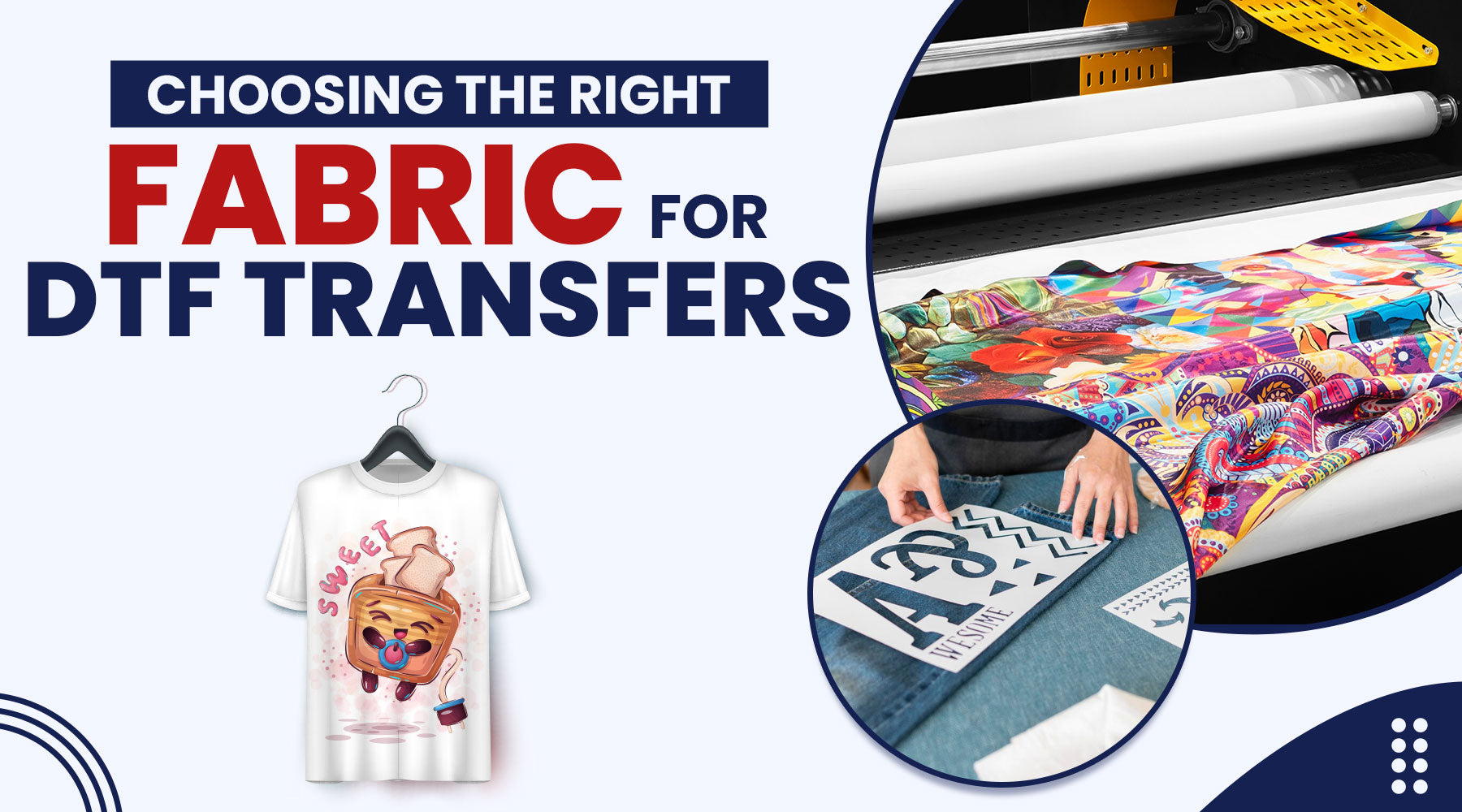The Direct-to-Film (DTF) transfer technique has become widely used in the garment modification and embellishment industry. The way textiles are adorned has been changed by DTF transfers, which offer vivid colors, detailed designs, and durability. However, choosing the right fabric is crucial to the success of DTF printing.
We will examine the nuances of fabric selection for DTF transfers in this article, covering a range of topics and providing helpful advice.
Understanding DTF Transfers
DTF transfers involve printing designs onto a special film, which is then transferred onto the fabric using a heat press. This process enables high-quality prints with excellent color reproduction and detail retention. Unlike traditional methods like screen printing, DTF transfers offer versatility in design and substrate compatibility.
Factors Influencing Fabric Selection
Fabric Composition
The composition of the fabric plays a pivotal role in determining the success of DTF transfers. Different fabrics react differently to heat and pressure, affecting the adhesion and durability of the transfer. Here's a breakdown of two primary fabric types:
Natural Fabrics (Cotton, Linen):
Cotton, with its breathable and absorbent nature, is a popular choice for DTF transfers. It provides excellent adhesion and produces vibrant prints.
Linen, though less common, can also be used for DTF transfers. However, its rough texture may affect print clarity.
Synthetic Fabrics (Polyester, Nylon):
Polyester fabrics are highly compatible with DTF transfers due to their low moisture absorption and smooth surface. They yield vivid prints with exceptional clarity.
Nylon, while suitable for DTF transfers, requires careful consideration due to its tendency to melt under high heat.
Also Read: Most Common DTF Printing Problems - How You Can Solve Them?

Fabric Color and Texture
The color and texture of the fabric influence the final appearance of DTF transfers. Light-colored fabrics tend to showcase prints more vividly, while darker fabrics may require additional layers for opacity. Smooth textures facilitate better ink adhesion and detail reproduction compared to rough textures.
Fabric Weight and Thickness
Fabric weight and thickness affect the transfer process and print durability. Lightweight fabrics may require lower heat and pressure to prevent distortion, while thicker fabrics may necessitate adjustments in printing parameters.
Stretch and Recovery Properties
Fabrics with stretch properties, such as spandex or elastane blends, require special attention during printing to prevent distortion or cracking of the transfer. Choosing fabrics with adequate stretch and recovery ensures longevity and comfort in wearable applications.
BUILD YOUR OWN GANG SHEETS
Popular Fabrics for DTF Transfers

Various fabrics are compatible with DTF transfers, each offering unique characteristics and applications:
- Cotton
- Polyester
- Nylon
- Treated leather
- Silk
- Denim
- Blends (e.g., cotton-polyester blend, other fabric blends)
Troubleshooting Common Fabric Issues
Despite careful fabric selection, issues may arise during the DTF transfer process. Common problems include:
- Bleeding and Fading: Ensure proper pretreatment and ink compatibility to prevent bleeding or fading of colors.
- Adhesion Problems: Adjust heat, pressure, and pretreatment to optimize adhesion, particularly on challenging fabrics.
- Stretching or Distortion: Use fabrics with appropriate stretch properties and adjust printing parameters to mitigate stretching or distortion.
Tips for Successful Fabric and DTF Transfers
To maximize the effectiveness of DTF transfers, consider the following tips:
- Preparing Fabrics Before Printing: Clean and pre-treat fabrics to ensure optimal ink absorption and adhesion.
- Using the Right Ink and Pretreatment: Choose DTF-specific ink and pretreatment solutions compatible with the fabric type.
- Adjusting DTF Printer Settings: Fine-tune printer settings such as temperature, pressure, and curing time based on the fabric's characteristics.

Also Read: Direct-to-Film (DTF) Printing: What are its Pros and Cons?
Conclusion
Selecting the right fabric is paramount for achieving high-quality DTF transfers. By understanding the influence of fabric composition, color, texture, weight, and stretch properties, you can optimize print quality and durability. With careful consideration and proper execution, DTF transfers offer endless possibilities for creative expression in garment decoration.
FAQs (Frequently Asked Questions)
Q: What fabric is best for DTF transfers?
Polyester fabrics are generally preferred for DTF transfers due to their compatibility and smooth surface.
Q: What materials can DTF transfers be used on?
DTF transfers can be applied to various materials, including cotton, polyester, nylon, silk, denim, and treated leather.
Q: Can you put DTF on 100% polyester?
Yes, DTF transfers work exceptionally well on 100% polyester fabrics, yielding vibrant and durable prints.
Q: Will DTF work on spandex?
Yes, DTF transfers can be applied to spandex fabrics; however, careful attention to printing parameters is required to avoid stretching or distortion.
Q: Is DTF better on cotton or polyester?
Both cotton and polyester offer unique advantages for DTF transfers. Polyester fabrics generally yield sharper and more vibrant prints, while cotton provides excellent breathability and comfort. The choice depends on the desired outcome and application.








